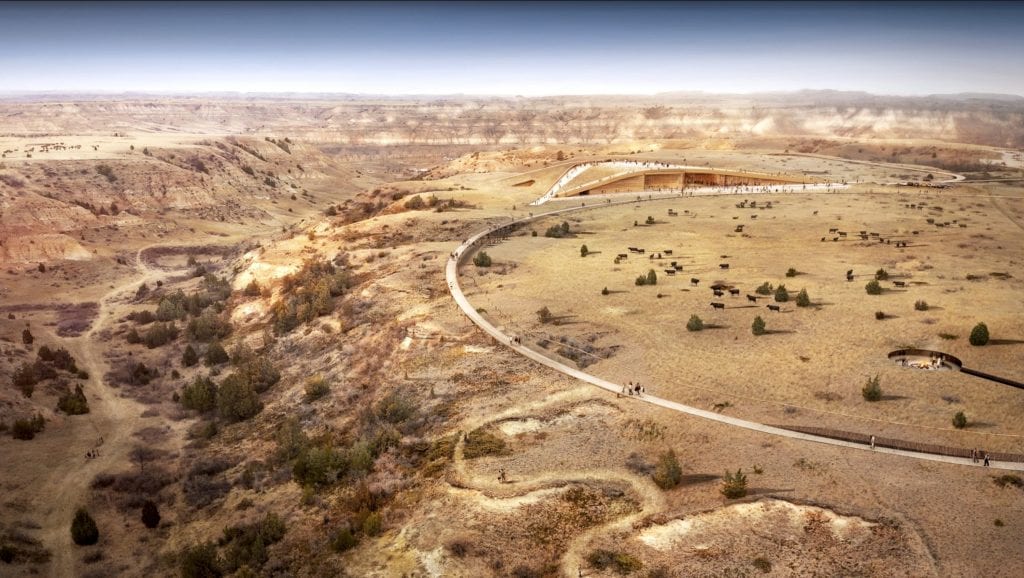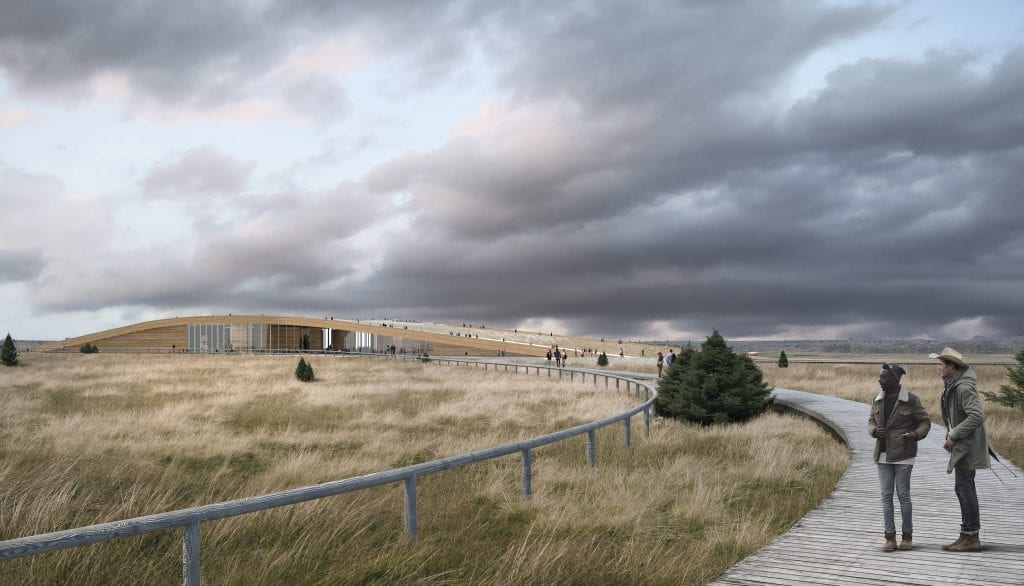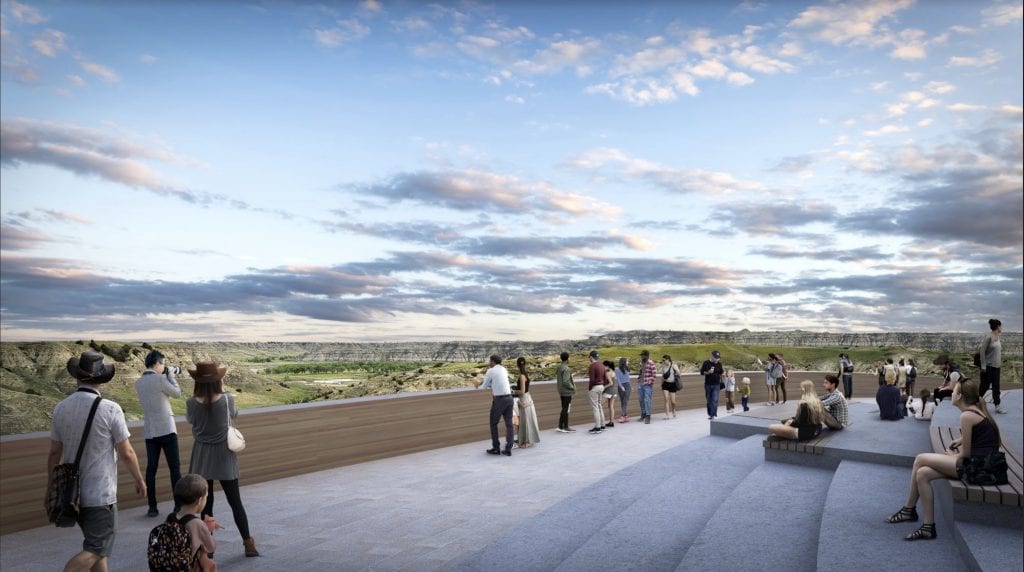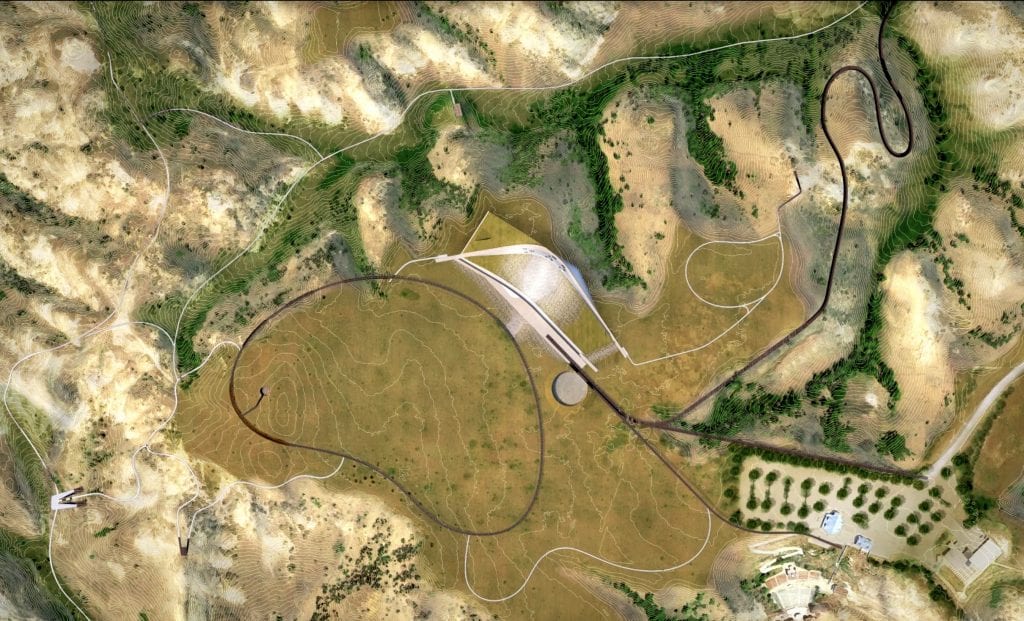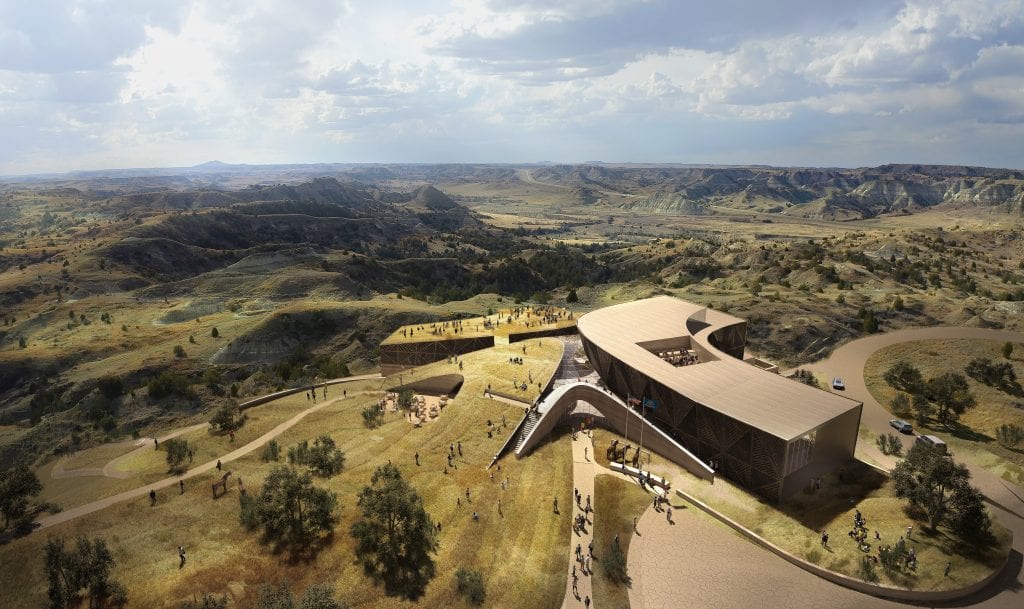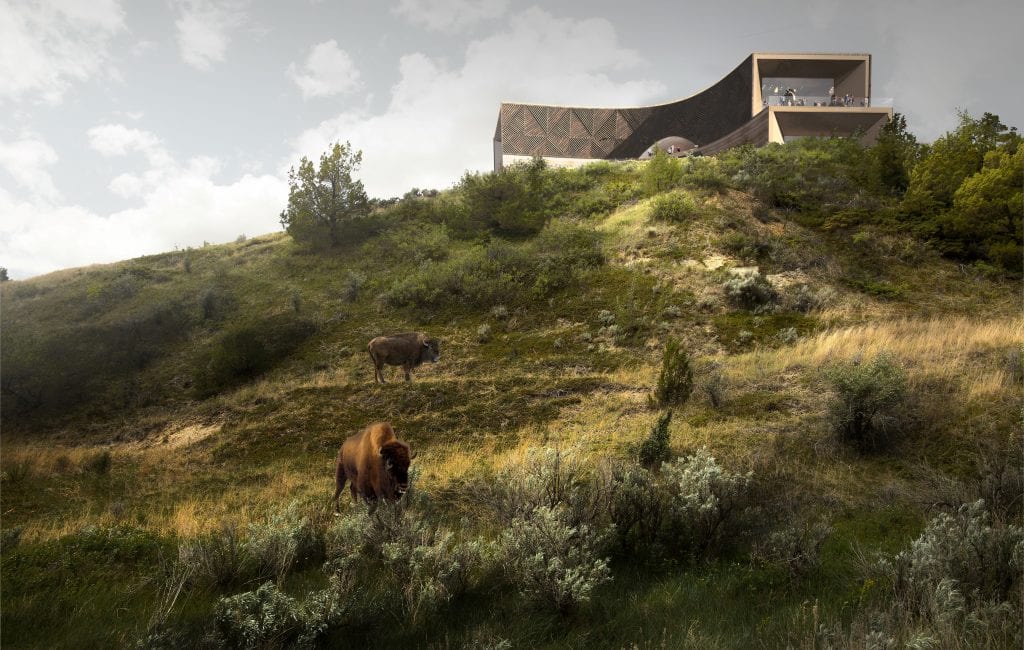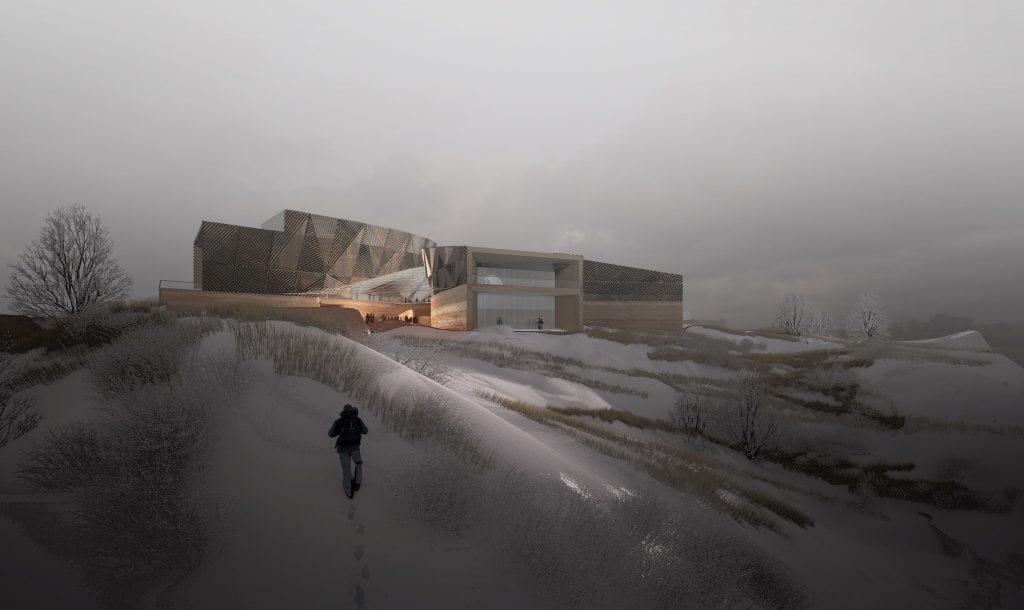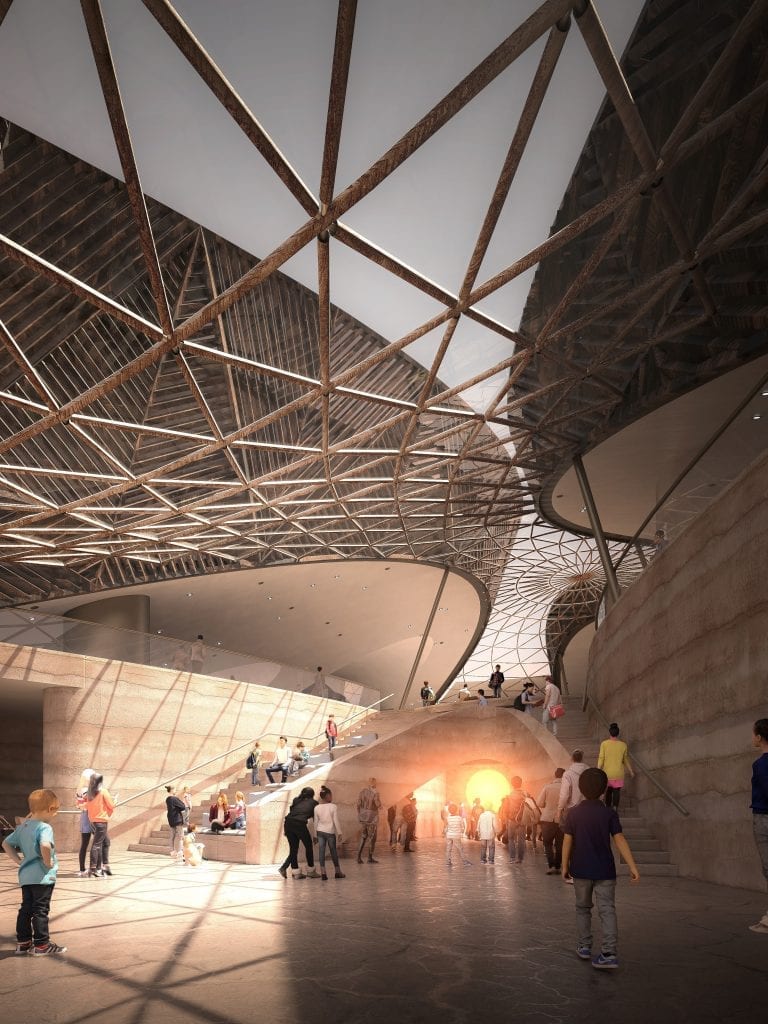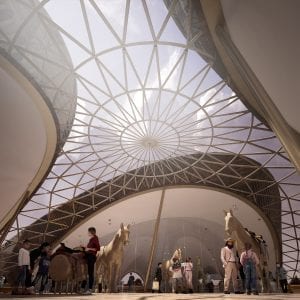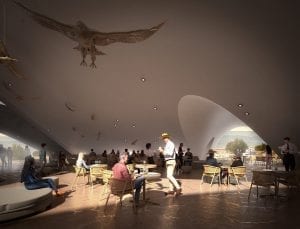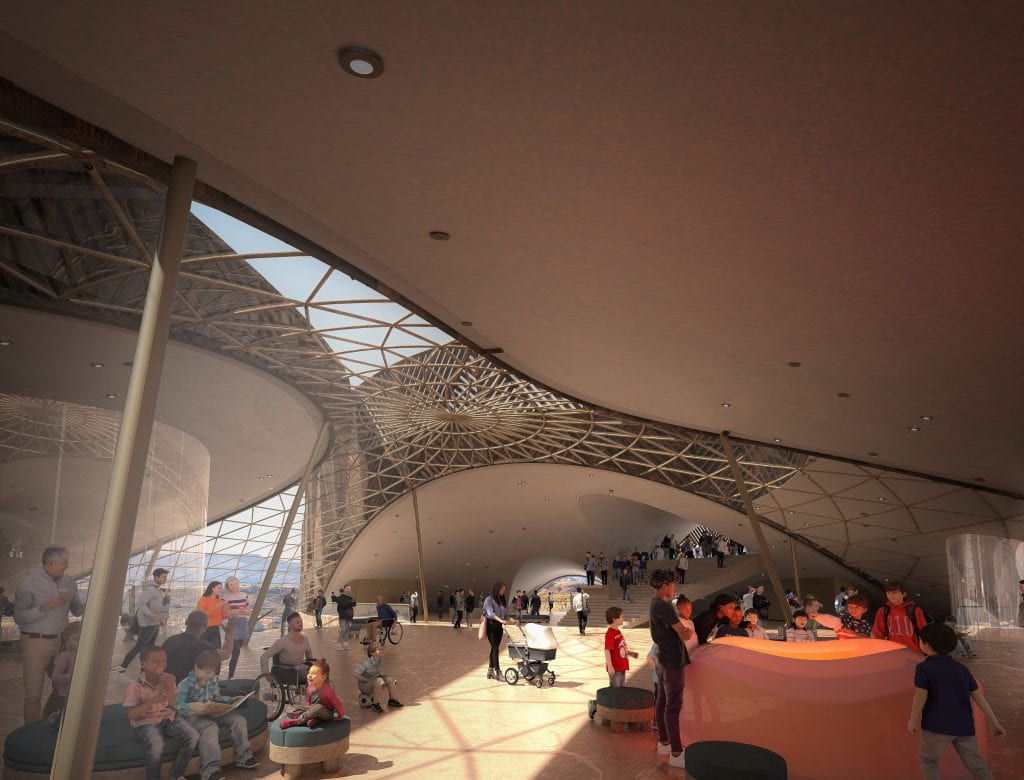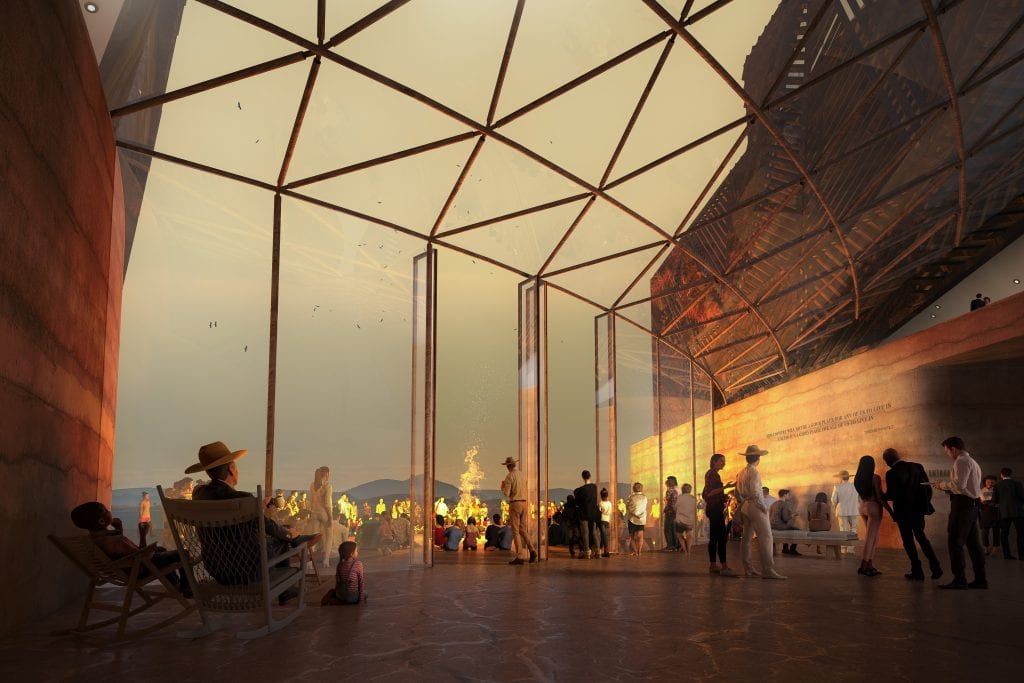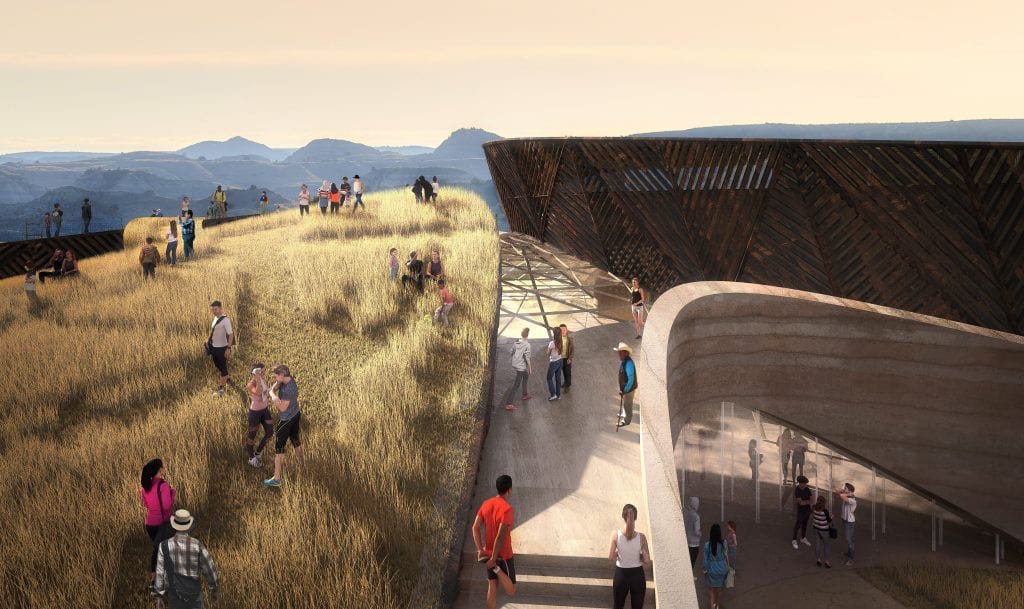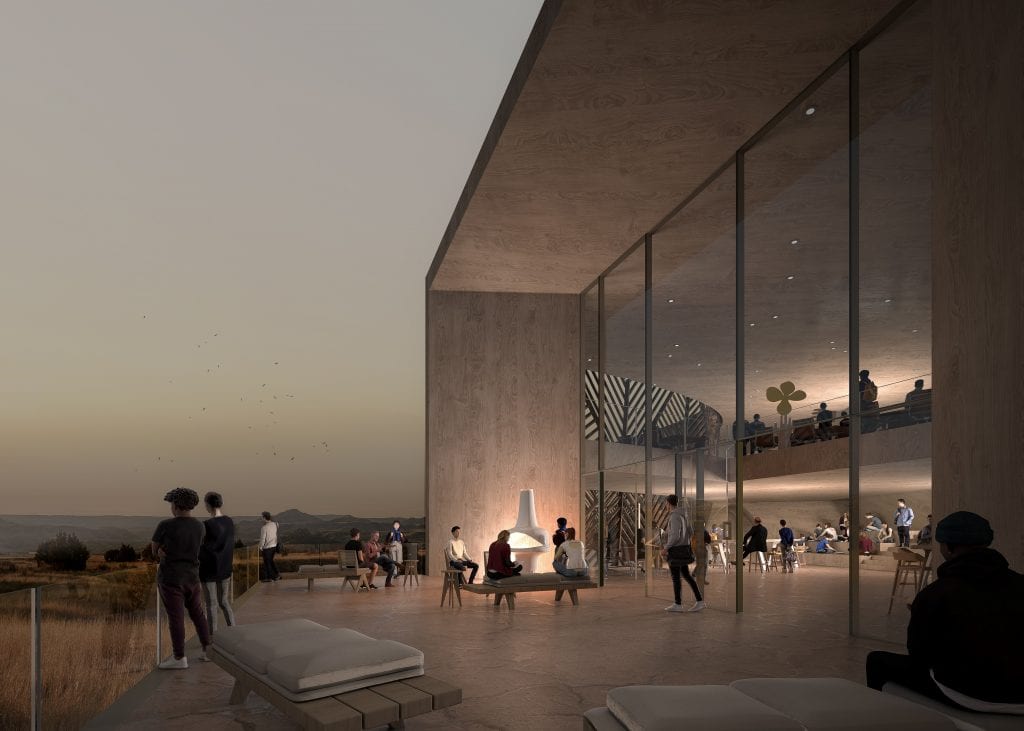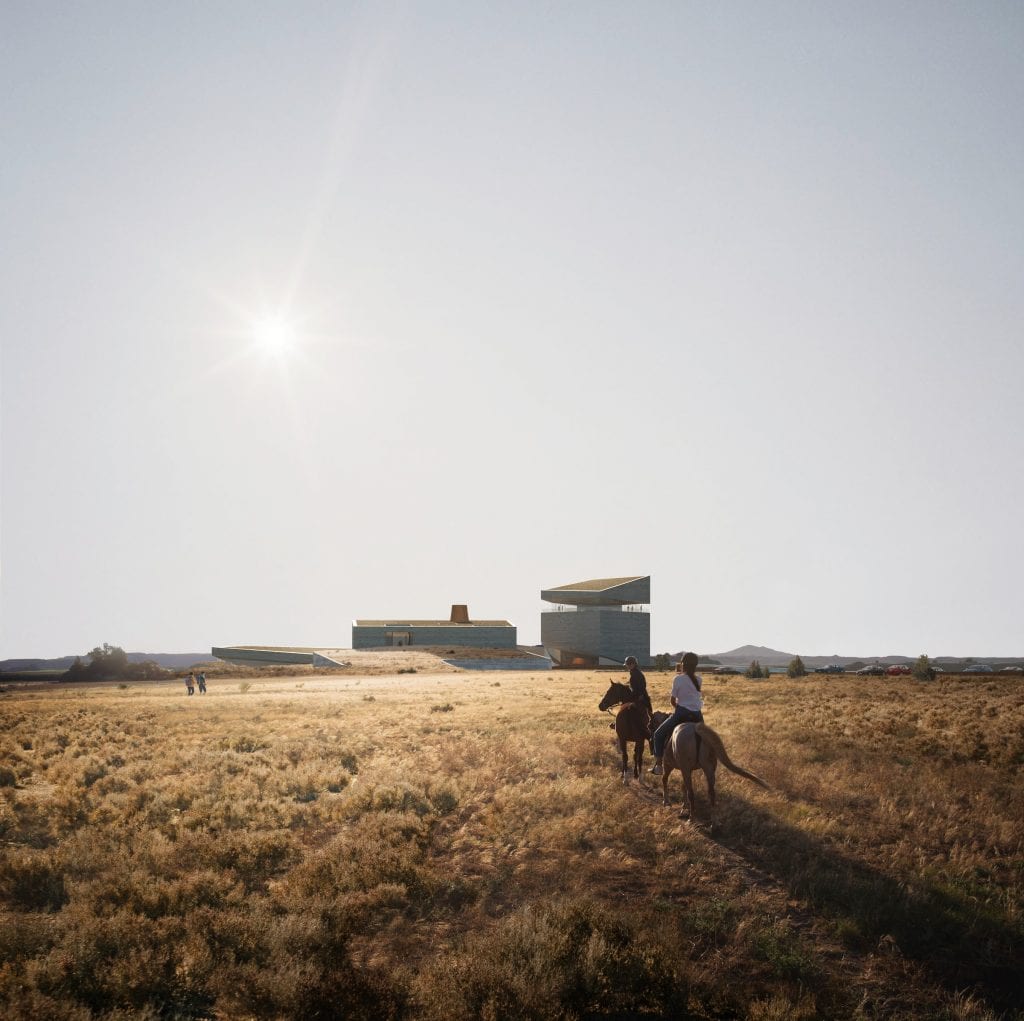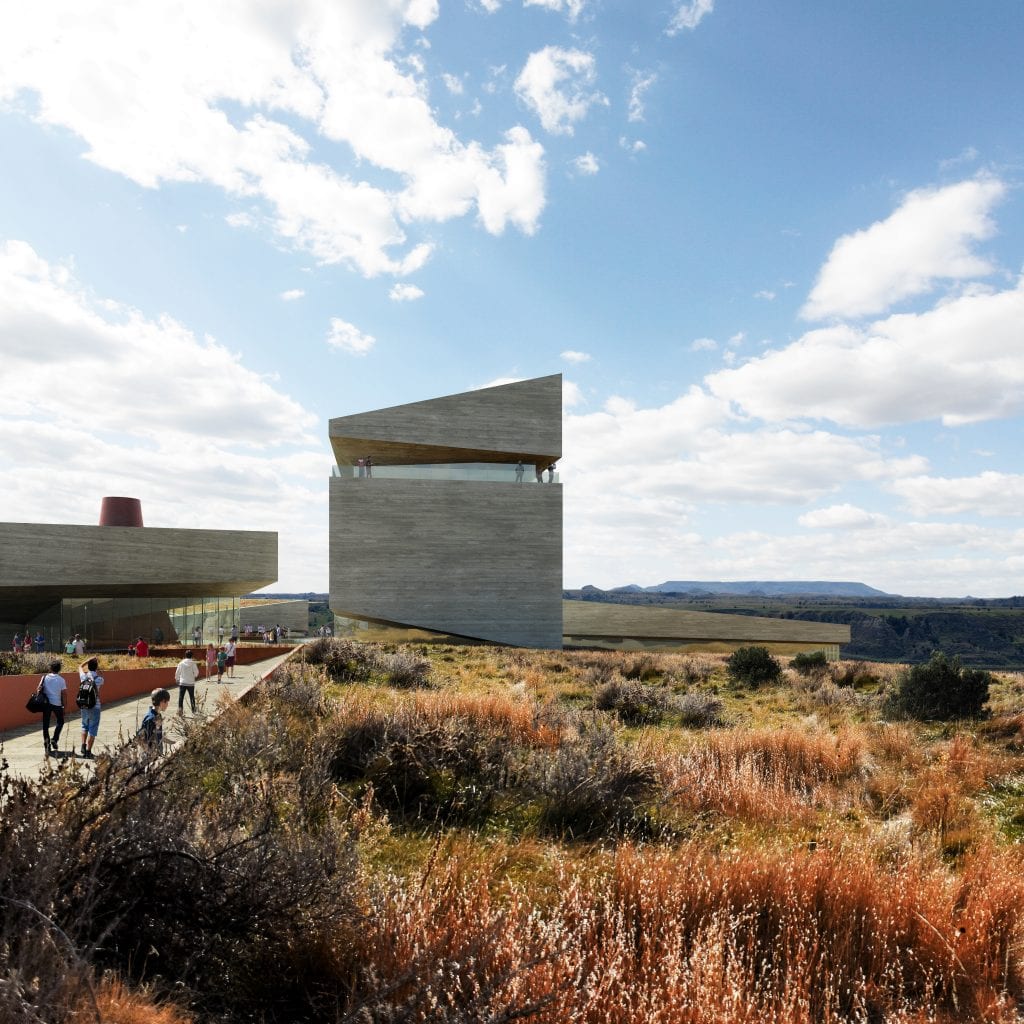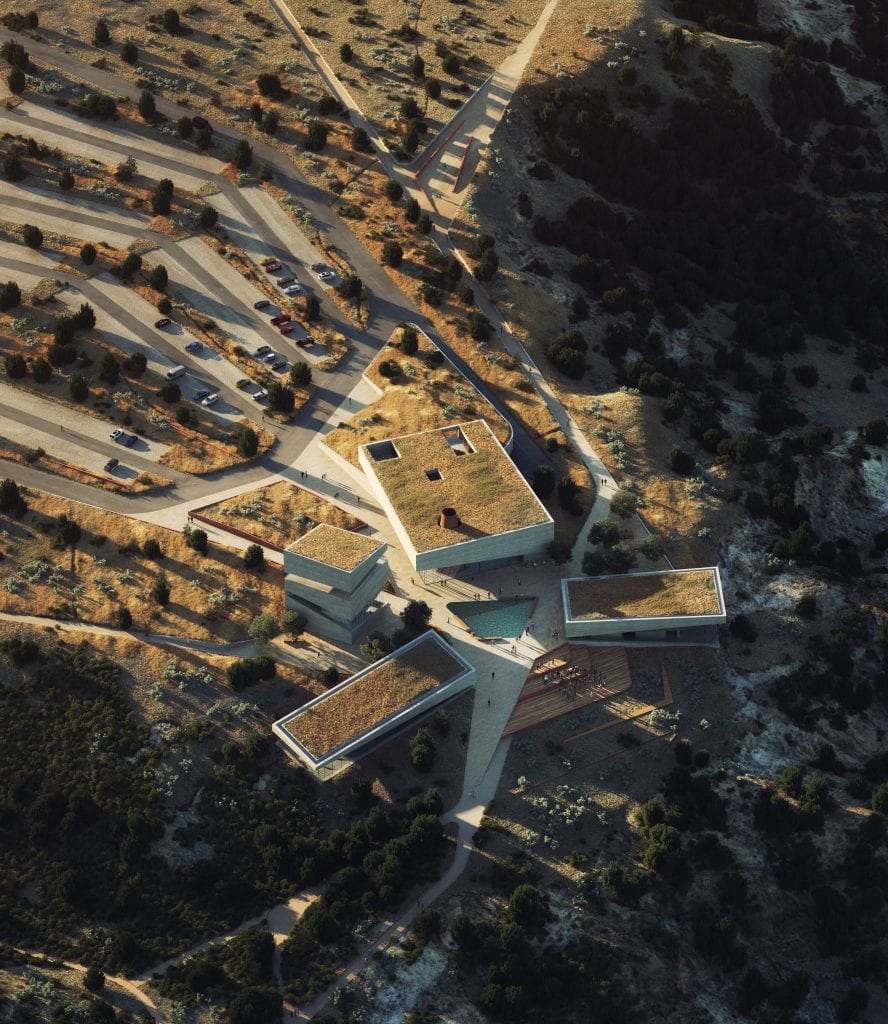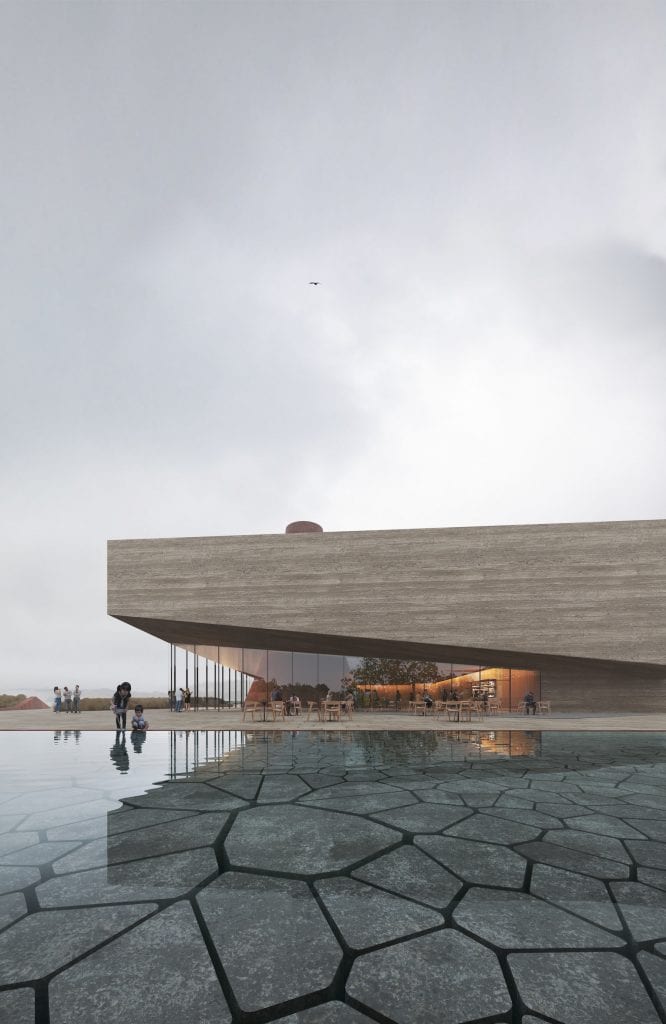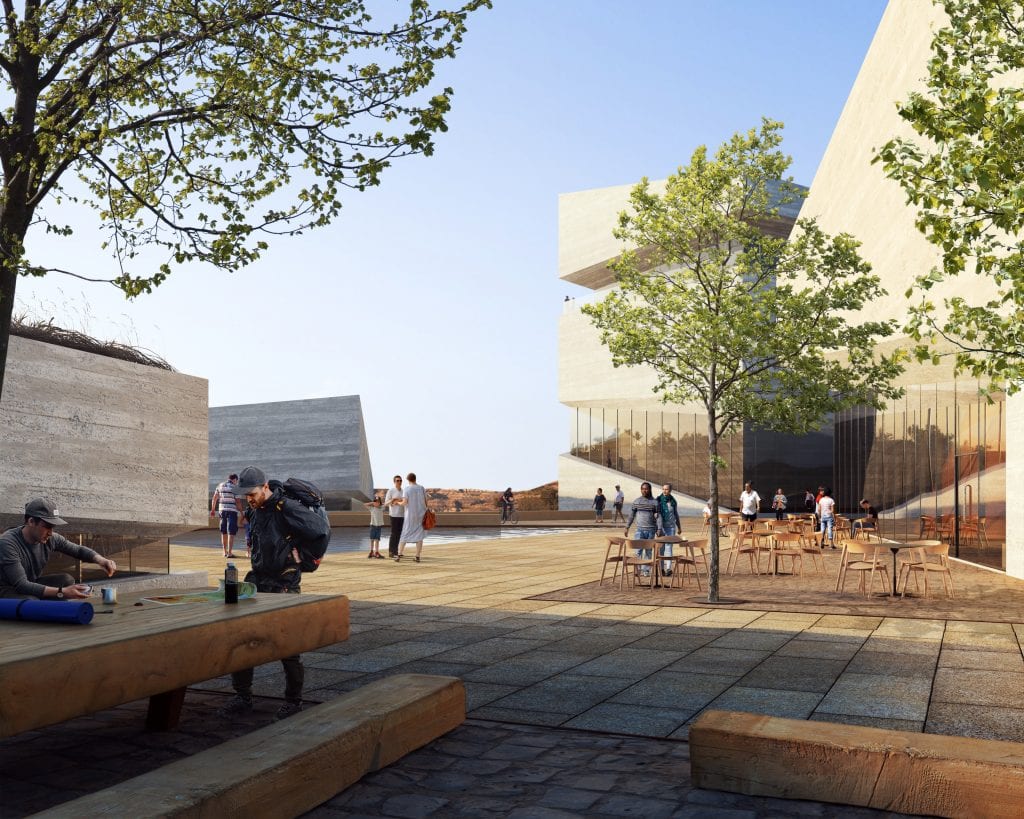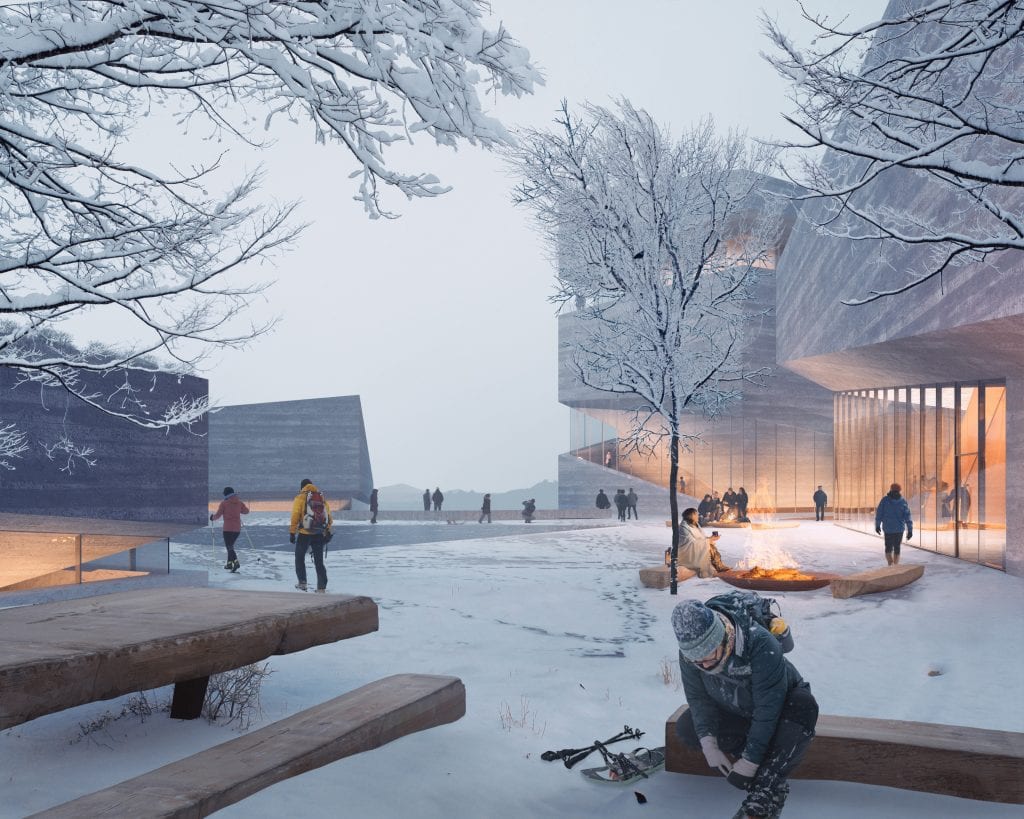Theodore Roosevelt Presidential Library Competition
Until now, the establishment of presidential libraries at the conclusion of their terms has followed the founding of the Franklin Delano Roosevelt Library after World War II. The first exception to this was the Herbert Hoover Presidential Library, established in 1962.* Now a foundation has been established in North Dakota (2014) to honor the presidency of Theodore Roosevelt, but with an overriding theme—protecting this country’s national parks, which TR was so instrumental in establishing. North Dakota as a site for this effort would appear to be quite logical. Until Teddy Roosevelt’s interest turned to politics in 1888, he spent time roughing it in North Dakota, even buying two ranches near the area when the new library is to be located. One of four presidents honored on Mt. Rushmore, Theodore Roosevelt is known as much for his creation of the national park system, as for using anti-trust laws to break up major corporate monopolies at the turn of the century. Since he first became aware of the benefits of our forests and plains as a natural resource during visits in his early years in North Dakota, it was logical that a group proposing the library idea could immediately gain support from the state government for such a venture. Moreover, raising $100M for the construction of the project from private sources hardly proved to be an insurmountable obstacle and paved the way for a $50M grant from the state government for an endowment to support the operation of the library.
The site chosen for the location of the new library is adjacent to the town of Medora, North Dakota, just south of Roosevelt National Park. Although only having a population of 128 inhabitants, Medora will undoubtedly see an increase, due to an anticipated growth in visitors when the library in completed by 2025.
To arrive at a design for the building and site, the Theodore Roosevelt Library Foundation turned to a design competition format that shortlisted three firms as finalists:
• Snøhetta (Oslo, Norway and New York City)
• Studio Gang (Chicago)
• Henning Larsen (Copenhagen, Denmark/New York)
Although all three firms can point to major projects in their resumes, Snøhetta is best known for having launched the firm by virtue of winning a major international competition—for the Alexandria Library in Egypt. The competition finalists were announced on 21 May 2020, and the winner, Snøhetta, was revealed to the public on 21 September 2020. The selection of Snøhetta was not a great surprise, since the goal of the competition, as expressed by the client, was “to build an awe inspiring, architecturally significant destination that works with, not against, nature.”
Snøhetta’s design of the main building can only be characterized as landscape-oriented, as it hardly represented a gigantic structure rising out of the hills. This was in contrast to the designs by both Studio Gang and Henning Larsen, who produced designs focusing more on the buildings than the landscape as a solution.
Snøhetta’s solution for the library itself could even be regarded as something peeking out under the landscape, with the possibility of visitors even using the grassy rooftop as a point of contemplation.
Looking back to other competitions, this strategy had a few forerunners: the winning design for wHY Architecture’s Ross Pavilion competition in Edinburgh, Scotland prevailed by turning to a landscape-oriented solution.**
The following narratives accompanying each proposal illustrate each team’s strategy. As of this date, the client has just reached an agreement to start construction by adding local firms to the winning Snøhetta team. The Foundation hopes to have the library open to the public by 2024 or 2025.
*It should be noted that, in the absence of a national library for Abraham Lincoln, The Lincoln National Life Insurance Company in Fort Wayne, Indiana possessed the largest collection of materials on Lincoln until its closing in 2008, when the Lincoln National Library and Museum in Springfield, Illinois became the major source of Lincoln’s records.
**https://competitions.org/?s=Ross+pavilion%2C+Edinburgh&submit.x=0&submit.y=0
Winning Entry
Snøhetta
New York/Oslo
Snøhetta Narrative
Our design for the Theodore Roosevelt Presidential Library Competition is informed by the President’s personal reflections on the landscape, his commitment to environmental stewardship, and the periods of quiet introspection and civic engagement that marked his life.
The design of the Library is more than a building; it is a journey through a preserved landscape of diverse habitats, punctuated with small pavilions providing spaces for reflection and activity.
The building’s location at the northeast edge of the butte preserves the landscape for conservation research while offering a setting for educational walks, leisure, and recreation.
As visitors set out on the Library loop, they will encounter adventurous paths which connect to the nearby Maah Daah Hey Trail as well as several small pavilions. Ranging from contemplative nooks to expansive vistas, these pavilions invite visitors to experience Roosevelt’s trials and triumphs in dialogue with the landscapes that shaped him.
Visitors can ascend the accessible rooftop to discover commanding views of the National Park, including historical settings in the Little Missouri River valley, and the location of Roosevelt’s Elkhorn Ranch far in the distance. The vista is a call to action, connecting today’s visitor to Roosevelt’s legacy. At night, the roof provides an ideal location for stargazing.
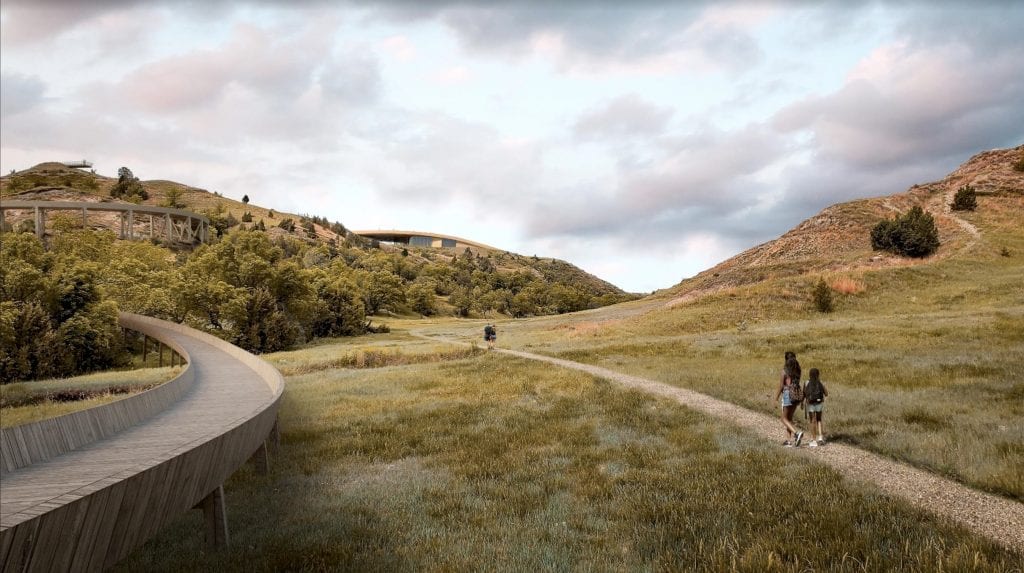
View to library looking west

Landscape view

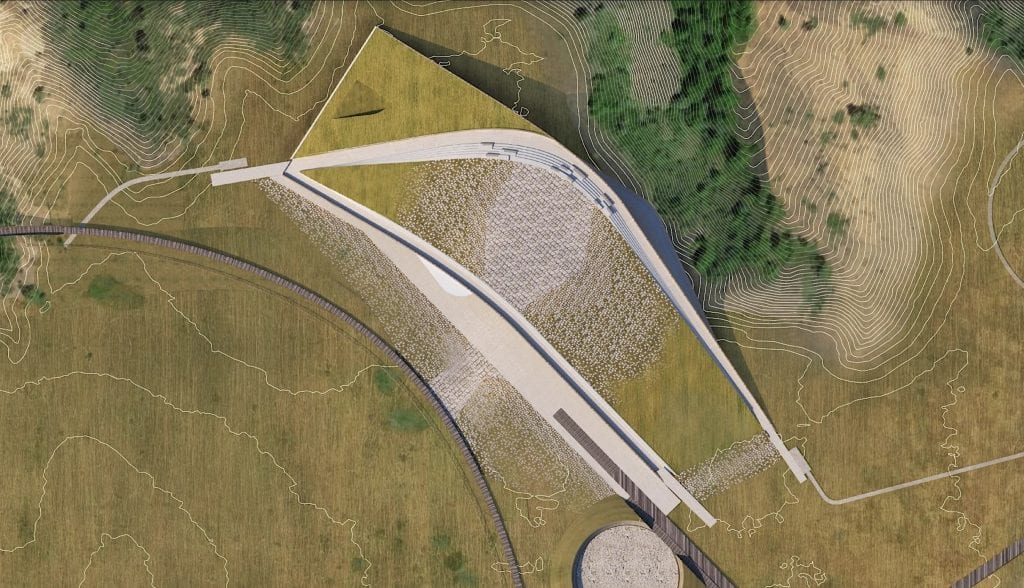
Floor plan and roof plan
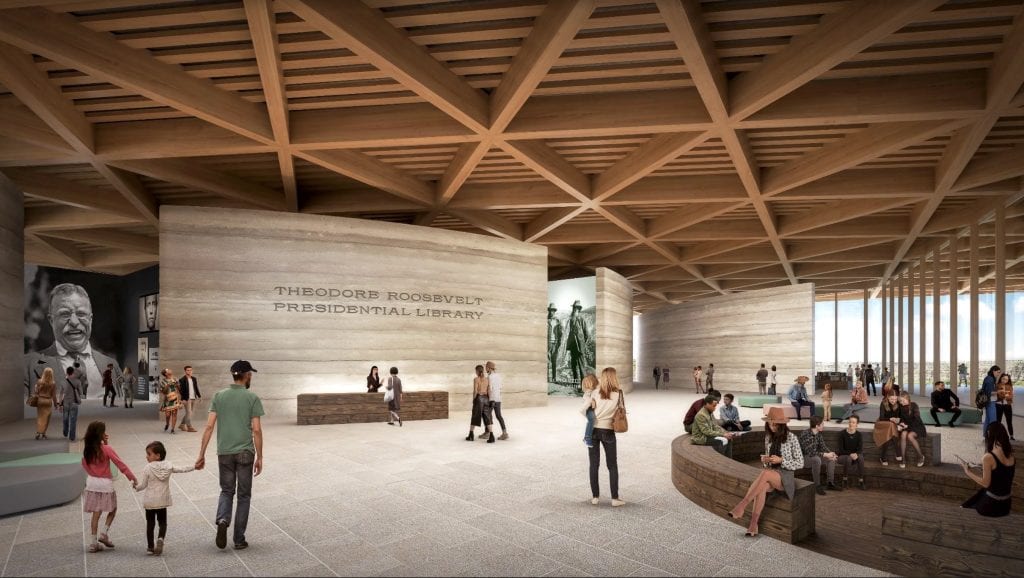
Visitors lobby
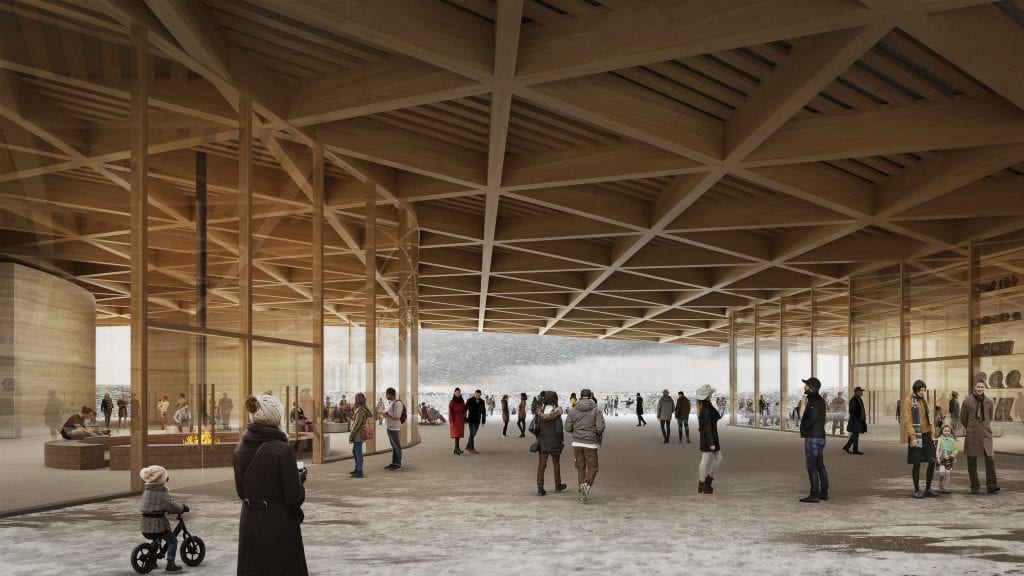
View looking north
Finalist
Studio Gang / Olin
Chicago / Philadelphia
Studio Gang/Olin Narrative
Our design is inspired by T.R.’s dual love of learning and the outdoors, As the first Presidential Library attached to a National Park, the project is poised to foster greater understanding, environmental stewardship, and healing in one of North America’s most incredible natural places. Intimately connected with the ecology of the North Dakota Badlands, Basecamp will at once draw people inward for intellectual exchange and direct them outward for physical exploration, allowing them to discover new connections with each other and the natural world.
The structure takes its inspiration from the rock formations of the Badlands, presenting itself as an emergent hardscape naturally formed by water and wind over time. Three horseshoe-shaped volumes organize the different functions of the Library, each housing distinct activities at the interior while emphasizing qualities of the outdoor environment by creating terraces and garden spaces that offer varying views of the landscape.
The voids between the volumes act as “cracks” in the Badlands’ clay-rich soil allowing hints of light and ventilation to move through the interior of the building. Moreover, there is a symbiotic relationship employed between the landscape and the architecture to highlight the inherent connectivity of the regions planes and greenery. Passive and active green strategies have been employed to push the Library toward a net-zero, carbon-neutral achievement.
All above images ©Studio Gang
Finalist
Henning Larsen / Nelson Byrd Wolz
New York / Charlottesville / New York
Henning Larsen Narrative
Located in the rich landscapes of the North Dakotan Badlands, Henning Larsen’s design takes its inspiration from its environment. “There is a unique and awe-inspiring beauty to everything about the Badlands that you simply cannot experience anywhere else,” said Michael Sørensen, design lead and Partner at Henning Larsen in a statement. “The landscape only fully unfolds once you are already within it; once you are, the hills, buttes, fields, and streams stretch as far as you can see.”
The building is comprised of four volumes that each shape a formal reference to the geography of the Badlands. The focal point of the collection of structures is the Legacy Beacon, a tower that becomes a visible landmark. Underground, the four volume are linked along a continuous “narrative trail” where Roosevelt’s legacy is exhibited and experienced. These are the “roots” of the project.
“Our team’s first design steps for the Roosevelt Presidential Library reveals the deep cultural and ecological history of the Badlands to educate a national and international audience, to spark conversation, and to create the next generation of stewards of this treasured land in the spirit of T.R.” said Thomas Woltz, Principal and founder of Nelson Byrd Woltz in a statement.
Upon entry at the lobby, visitors follow a sloping spiral path down to the exhibition level, where their journey along The Hero’s Journey begins. This journey explores Roosevelt’s life, work, and legacy while also showcasing the landscape of the Badlands. Each phase of the exhibition pauses to emphasize and overlook different aspects of the surrounding landscape.
Above images: ©Henning Larsen



























